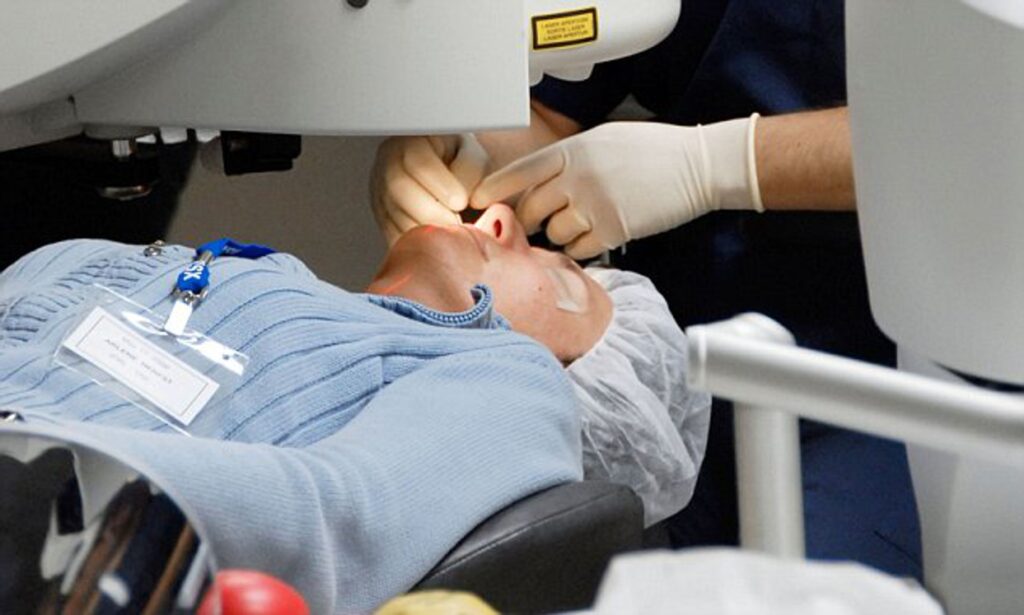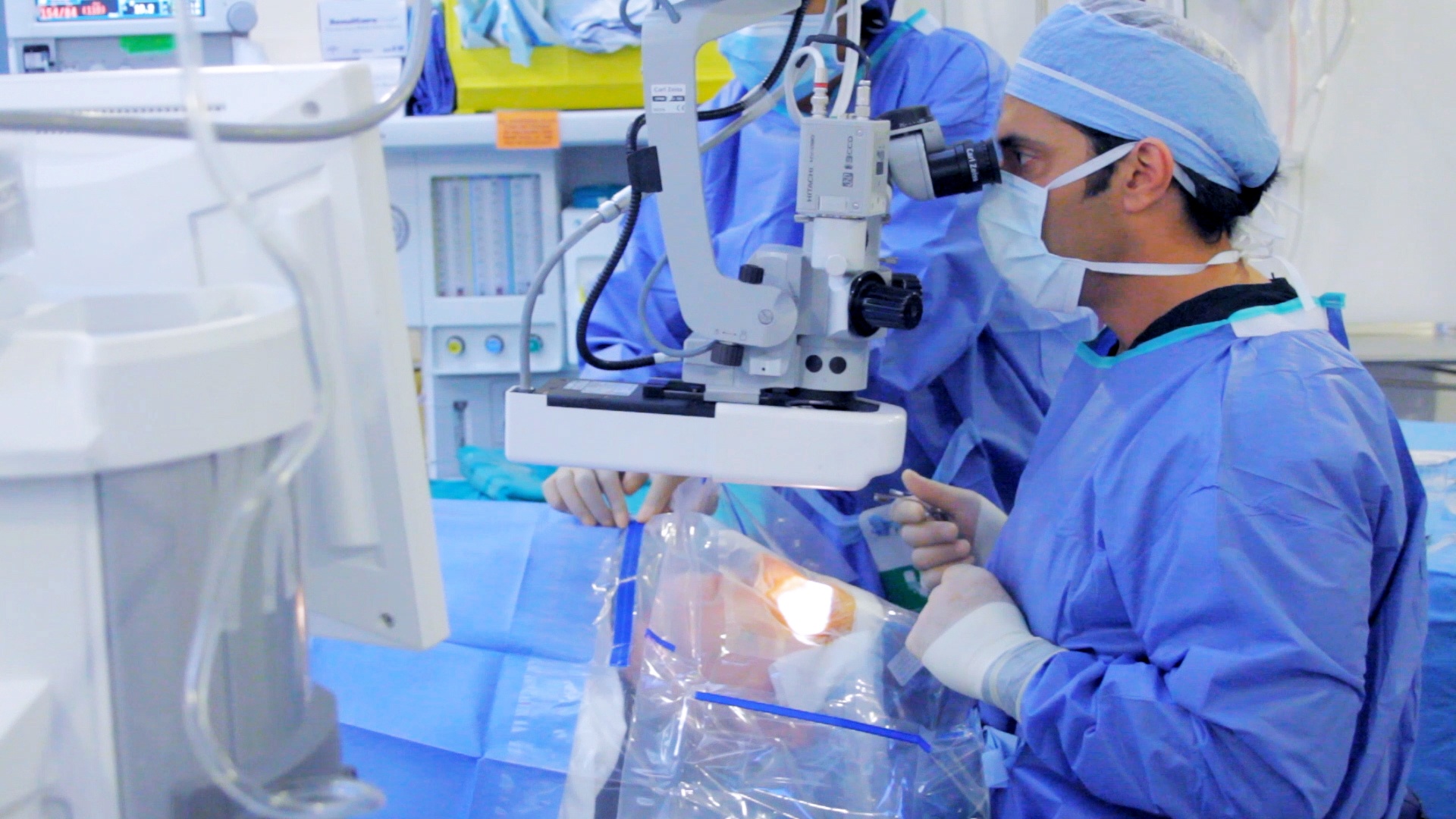Know the different kinds of LASIK
Numerous LASIK patients see an improvement in their visual acuity the day following their operation. You should notice an improvement in your eyesight over time, as well as less problems. Within a month after operation, your eyesight should stabilize.
Additionally, you would need to see your doctor within a month after eye surgery lasik. Your surgeon will continue to check your eyesight and make any necessary adjustments.
If you previously had significant nearsightedness, your eyes may need more time to recover. However, do not be concerned; your eye doctor will have included this into your rehabilitation plan. This may need you to wear glasses for a brief period of time in order to aid in the healing of your eyes.
You may continue to use your devices as usual but ensure that you take extra rests in between. Although your eyes are now less sensitive, they are still recovering.
Three Months and Continuing
While you may not be experiencing any symptoms at this stage, your eyes may still be mending. Additionally, your eyesight may continue to improve throughout this time period. As a result, you must still visit your eye surgeon between the third and sixth months after surgery.

Promote Healing Properly with These Post-LASIK Care Tips
As long as you adhere to these LASIK recovery instructions, you can assist your eyes in recovering immediately after surgery. Additionally, they will aid in preventing problems such as chronic dry eye and infection.
Additionally, if you have any atypical pain or discomfort, do not hesitate to contact your eye surgeon.
Did you know that over 26.9 million American adults reported having “vision problems” in 2017? That is despite the fact that some of them already wear glasses or contacts!
Additionally, up to 61 million persons in the United States are at high danger of serious vision loss.
However, there is some good news. Today, there are more options for LASIK to repair visual difficulties. With more possibilities, your chances of becoming a suitable candidate for one of them increase.
Are you interested in learning more about your LASIK options? Then continue reading as this page will cover all you need to know about them!
LASIK: Photorefractive Keratectomy (PRK)
Prior to LASIK, there existed PRK surgery, which remains a popular technique to this day. It is a form of refractive surgery that corrects myopia, hyperopia, and astigmatism. It’s an excellent choice for folks who have mild to moderate instances of these eyesight impairments.
Keep in mind that all LASIK entail altering the cornea, the eye’s transparent outermost layer. Their distinction is in the area of the cornea that is operated on.
How PRK Is Used
In PRK, the surgeon just utilizes the laser on the cornea’s surface.
The physician begins by removing and discarding the epithelium (corneal surface cells). Some PRK surgeons do this step using an alcohol solution, while others do it with a blunt surgical equipment. Following that, the surgeon reshapes the cornea using an excimer laser.
hAlthough LASIK has surpassed PRK as the most often performed LASIK, it is still a prevalent technique. This is particularly true for people with thin corneas or who have recurrent corneal erosion.

Duration of the Procedure
The PRK procedure takes around 15 minutes. It does need a lengthier recovery time than LASIK, since the epithelium might take several days to regrow.
LASIK (Laser-Assisted In-Situ Keratomileusis) Eye Surgery
Each year, up to 800,000 individuals in the United States receive LASIK.
In addition to nearsightedness, farsightedness, and astigmatism, LASIK, like PRK, corrects astigmatism. In contrast to PRK, this procedure involves the surgeon creating a thin flap in the cornea. Unlike PRK, which removes the cornea’s outermost layer, the LASIK flap stays connected to the eye.
In terms of how long LASIK takes, the majority of operations take less than 30 minutes. This, however, is still dependent on your unique circumstances. However, many people report significant visual improvements the very following day.
Additionally, LASIK eliminates the need for sutures and bandages.
Additionally, LASIK recuperation often happens immediately after the treatment. Due to the possibility of blurred vision, it is critical to have someone drive you home after surgery. Additionally, the surgeon will request that you return the following day for examination.
Today, you may select between classic LASIK and bladeless LASIK. We’ll go into further depth about them below.
LASIK Surgery, either conventional or “Bladed”
In classic LASIK, the flap is created using a tiny blade called a microkeratome. Following that, they utilize a laser to modify the shape of the patient’s cornea in order to rectify their eyesight. Following surgery, this flap is lowered to its original place.
While standard LASIK is safe and successful, it may result in “flap buttonholes.” This problem may emerge as a result of an improper corneal cut during flap formation. It manifested modest symptoms like as haloes and brightness in those who acquired it.
It is, however, an extremely unusual condition, occurring in 0.47 percent to 1.7 percent of individuals, according to a 2010 research. Since then, LASIK technology has advanced significantly, which means that the dangers associated with surgery have decreased significantly.
Indeed, a 2017 FDA investigation showed that contemporary lasers used in LASIK have improved dramatically. These advancements resulted in significantly improved patient-reported outcomes after surgery.
LASIK Eye Surgery Without a Blade
LASIK without blades is often referred to as “All-Laser” or “IntraLase” LASIK. It is capable of treating the same eyesight issues as conventional LASIK.
The distinction is that this kind of LASIK surgery is bladeless. This is significant for individuals with very thin corneas who were previously deemed unsuitable for LASIK. They may be more ideal for bladeless LASIK because to the precision with which laser technology can construct a flap.
In bladeless LASIK, surgeons form the flap and reshape the cornea using a laser rather than a blade. The doctor next elevates the flap generated by the laser in order to remodel the corneal tissue underneath. As with standard LASIK, the flap is repositioned in its original spot to let it to recover naturally.
iLASIK is a more sophisticated kind of bladeless LASIK. It entails the acquisition of a WaveScan® WaveFrontTM picture of each patient’s eye.
The surgeon may use this technology to produce a three-dimensional map of the eyes. The doctor may then tailor the process to the patient’s particular eye characteristics. This capacity to tailor the LASIK technique enhances the predictability and safety of the operation.
With the Best LASIK, You Can Achieve the Clear Vision You Deserve
That concludes your comprehensive reference to the many forms of LASIK available today. It’s advisable to schedule your free LASIK consultation first to evaluate whether the surgery is good for you. Even if it is not, a LASIK-trained eye surgeon may assist you in determining the best alternative to LASIK.

